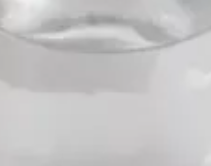Check the ingredients!
... live healthy!


| "Descrizione" by Al222 (19776 pt) | 2023-Apr-29 20:54 |
E1519 (Benzyl alcohol) is a natural aromatic alcohol. It occurs as a clear, colourless, oily liquid. It is soluble in water at a ratio of 1:30 and miscible with alcohol, ether and chloroform.
It appears as a clear oily liquid.

What it is used for and where it is used
Medical
Benzyl alcohol is the most frequently used antimicrobial preservative in multidose protein formulations, typically at a concentration of 0.9% (1). Anaesthetic (2), bacteriostatic agent. Solvent for vitamin B injections
Cosmetics
Flavouring agent, solvent, preservative, viscosity decreasing agent, perfume fixative. Deodorant.
External analgesic. It is used for the temporary relief of itching and pain associated with mild skin irritation. The purpose of the external analgesic is not absorption through the skin, but the creation of a skin sensation that has the ability to relieve pain with a warm or cool feeling.
Fragrance. It plays a very important role in the formulation of cosmetic products as it allows perfume to be enhanced, masked or added to the final product, improving its commercial viability. The consumer always expects to find a pleasant scent in a cosmetic product.
Oral care agent. This ingredient can be placed in the oral cavity to improve and/or maintain oral hygiene and health, to prevent or improve a disorder of the teeth, gums, mucous membrane.
Preservative. Any product containing organic, inorganic compounds, water, needs to be preserved from microbial contamination. Preservatives act against the development of harmful microorganisms and against oxidation of the product.
Solvent. It is the substance for dissolving or dispersing surfactants, oils, dyes, flavourings, bactericidal preservatives in solution.
Viscosity decreasing Agent. Since viscosity is important for increasing the chemical and physical stability of the product, Viscosity Reducing Agent is an important dosage factor in gels, suspensions, emulsions, solutions.
Pharmaceuticals
Bacteriostatic agent in parenteral preparations, in water used to flush intravascular catheters, in the reconstitution of drugs. Excipient, solvent with medium boiling point.
Food
Flavouring agent as it is extracted from ylan-ylang, violet, jasmine and other flowers. On the European food additives list it has the number E1519.
In 2019, the European Union's Scientific Panel on Food Additives and Flavourings (FAF) concluded the re-evaluation of benzyl alcohol in its use as a food additive by stating that exposure to benzyl alcohol (E 1519) does not raise safety concerns for reported uses and use levels (3) and set an ADI (Acceptable Daily Intake) of 4 mg/kg body weight per day.
Other applications
Warnings
Benzyl alcohol generates a small amount of benzaldehyde and benzyl ether and is therefore not suitable for long-term storage as it can slowly oxidise.
The most relevant studies on the subject have been selected with a summary of their contents:
Optimal typical characteristics of the commercial product Benzyl alcohol
| Appearance | Clear, colourless, oily liquid |
| Boiling Point | 204.7±0.0 °C at 760 mmHg |
| Purity | 99% |
| Melting Point | -15 °C |
| Flash Point | 93.9±0.0 °C |
| Benzaldehyde (ppm) | 250max |
| Acidity(As benzoic acid)% | 0.1max |
| Cloride % | 0.005max |
| Specific Gravity (20 ℃) | 1.043-1.048 |
| Refractive index (20 ℃) | 1.538-1.541 |
| Water% | 0.1max |
| Water Solubility | 4.29 g/100 mL (20 ºC) |
| Residue on evaporation,% | 0.1max |
| PSA | 20.23000 |
| LogP | 1.03 |
| Vapour density | 3.7 |
| Self-ignition point | 435℃ |
| Storage | +2°C to +25°C |
| Safety |  |
 |  |
 |  |
Synonyms:
References____________________________________________________________________
(1) Meyer BK, Ni A, Hu B, Shi L. Antimicrobial preservative use in parenteral products: past and present. J Pharm Sci. 2007 Dec;96(12):3155-67. doi: 10.1002/jps.20976.
(2) Spence S, Houslay MD. The local anaesthetic benzyl alcohol attenuates the alpha 2-adrenoceptor-mediated inhibition of human platelet adenylate cyclase activity when stimulated by prostaglandin E1, but not that stimulated by forskolin. Biochem J. 1989 Dec 1;264(2):483-8. doi: 10.1042/bj2640483.
(3) EFSA Panel on Food Additives and Flavourings (FAF), Younes M, Aquilina G, Castle L, Engel KH, Fowler P, Fürst P, Gürtler R, Gundert-Remy U, Husøy T, Mennes W, Moldeus P, Oskarsson A, Shah R, Waalkens-Berendsen I, Wölfle D, Boon P, Crebelli R, Di Domenico A, Filipič M, Mortensen A, Van Loveren H, Woutersen R, Gergelova P, Giarola A, Lodi F, Frutos Fernandez MJ. Re-evaluation of benzyl alcohol (E 1519) as food additive. EFSA J. 2019 Oct 30;17(10):e05876. doi: 10.2903/j.efsa.2019.5876.
| Evaluate |